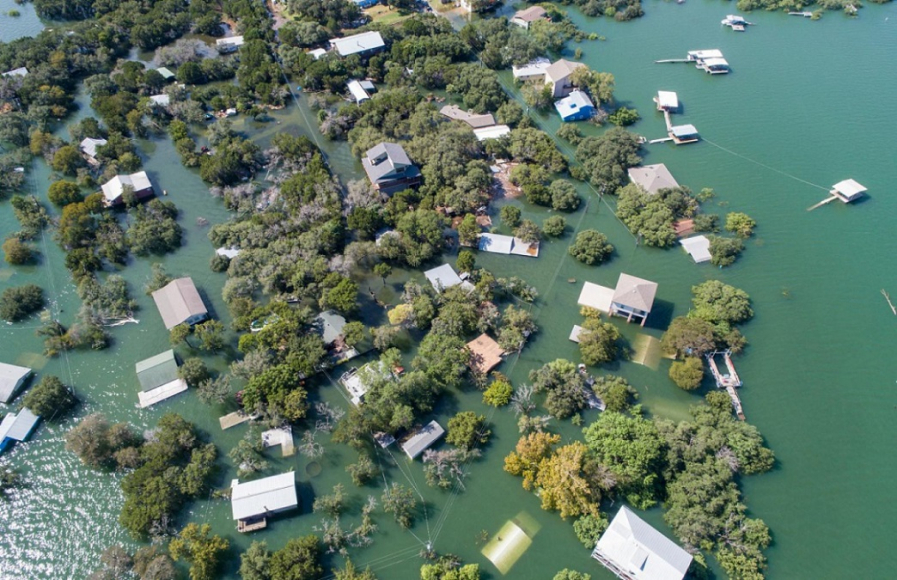There’s an old saying about building a plane while you’re in the air — a rather literal interpretation of “figuring things out on the fly.” Understandably, many of today’s companies seeking to reduce their environmental footprint and future-proof their businesses can relate to the adage.
As a concept and goal, sustainability is nothing new. But the ante has been upped and there’s no time to travel aimlessly. Grounded in the most current climate science available, science-based targets (SBTs) provide us with an evidence-based goal-setting framework for reducing greenhouse gas emissions and fueling business transformation. In other words, they place very specific destination points on the map.
Still looking to build a business case for SBTs and chart your course? We’ve got you covered.
But for those of you who’ve already set your targets, you’ll still need to figure out a climate action plan to get you there. (Hopefully without trying to construct anything in mid-air.)
Here’s a three-step blueprint for making it happen.
Step 1: Identify Opportunities Across Your Value Chain
By nature, science-based targets are ambitious and aggressive. From the outset, it’s important to wrap your arms around the full scope of this undertaking. Properly putting a climate action plan into place requires active participation from every corner of your organization: procurement, product innovation, packaging, suppliers, logistics, and beyond.
Engage stakeholders across all these different functions and departments, to determine what can realistically be achieved from a decarbonization standpoint. This step is about taking inventory of where things stand currently across the organization, how that compares to your desired future state, and which specific actions can help get you there.
You may find it helpful to break down the undertaking by different themes, such as climate mitigation, climate adaptation, renewable electricity production, and renewable heat. This brings specificity to a broad and sometimes ambiguous goal, and can enable individual stakeholders to better understand their acute role in getting there.
People tend to be so focused on their own respective needs and objectives that it isn’t always easy to effectively convey the importance and urgency of SBT initiatives. Because of this, it’s important to gain vocal C-level buy-in right away, so as to reinforce the imperativeness of these efforts.
Step 2: Cross-Reference Opportunities with Financials
Money is always going to be a relevant concern among key decision-makers and stakeholders. Capital is often the No. 1 roadblock in achieving SBTs.
On the surface, it’s admittedly a tough sell if you’re viewing the matter strictly from a bottom-line perspective. The costs of instituting a climate action plan to achieve science-based targets are not trivial by any means, and the ROI equation isn’t as straightforward as some other investments. (For what it’s worth, we find that these efforts yield a typical cost of $2,000 per tonne of CO2e reduction, along with a 10-15% average return on investment.)
You’ll want to avoid a scenario where expenses related to SBTs are ambiguous. Almost every executive has lived through a project or campaign where poorly forecasted budgets vastly exceed expectations and spiral out of control. Some of your most critical groundwork will involve assessing how much you’ll spend, where you’ll spend it, and why.
The steps taken as part of a climate action plan are proven to create environmental, operational, and financial efficiencies. And while there is certainly capital investment required, it’s also important to consider the costs of not taking action. These include:
- Investor pressure and scrutiny
- Innovation stagnation
- Regulatory issues
- Rising expense of raw materials and scarce resources
- Risks to business continuity
All of these factors should play into your financial review as you project impact of the identified opportunities on the bottom line.
Step 3: Prioritize Opportunities and Create a Climate Action Plan
Through the last two steps, you should be able to create a solid hierarchy of priorities. Based on discussions with various parties, and financial analysis, you’ll get a feel for the “low-hanging fruit” opportunities that make sense to tackle first.
For example, if you operate facilities in Houston and Orlando, and the Orlando municipality has put together its own aggressive sustainability plan, you may want to start there because the infrastructure and support is in place. You can then leverage your learnings from this experience and apply them in Houston and elsewhere.
While financial implications need to be factored heavily, fast monetary gains shouldn’t be your exclusive focus when lining up a climate action plan. Consider other benefits that can manifest more quickly. Which actions will result in high-profile public recognition, or engagement with your community and employees? The key in the early stages is to make palpable positive impacts, thus building collective momentum to move forward.
Of course, you’ll also want to weigh risks and contingencies against benefits. Where is consumer or investor pressure highest? Which departments and functions will be most affected operationally by the necessary adjustments? How do current and projected market conditions play into your outlook?
The bottom line? Intervention opportunities should be prioritized based on differences in feasibility, energy costs, available incentives, and what’s most important to your company. Accounting for all these components, you should be able to create a strategic plan of attack.
Building Toward Sustainability, Brick by Brick
Creating a climate action plan can feel intimidating on the surface, but it becomes much more manageable when you break down the necessary steps in granular fashion, prioritize opportunities, and document your roadmap.
Finding a partner with experience and expertise will make the entire process easier. At Antea Group, we specialize in developing these types of plans and putting them into action across large, distributed organizations. We realize that implementing a climate action plan is a big undertaking, so our main objective is to tailor it to your business. We always take business sense into account as well as the technical considerations needed to reach the desired achievements.
Contact us today if you’d like to chat about charting a realistic path to reaching your SBTs, so you’re not building a plane while in the air.
Want more news and insights like this?
Sign up for our monthly e-newsletter, The New Leaf. Our goal is to keep you updated, educated and even a bit entertained as it relates to all things EHS and sustainability.
Get e-NewsletterHave any questions?
Contact us to discuss your environment, health, safety and sustainability needs today.




